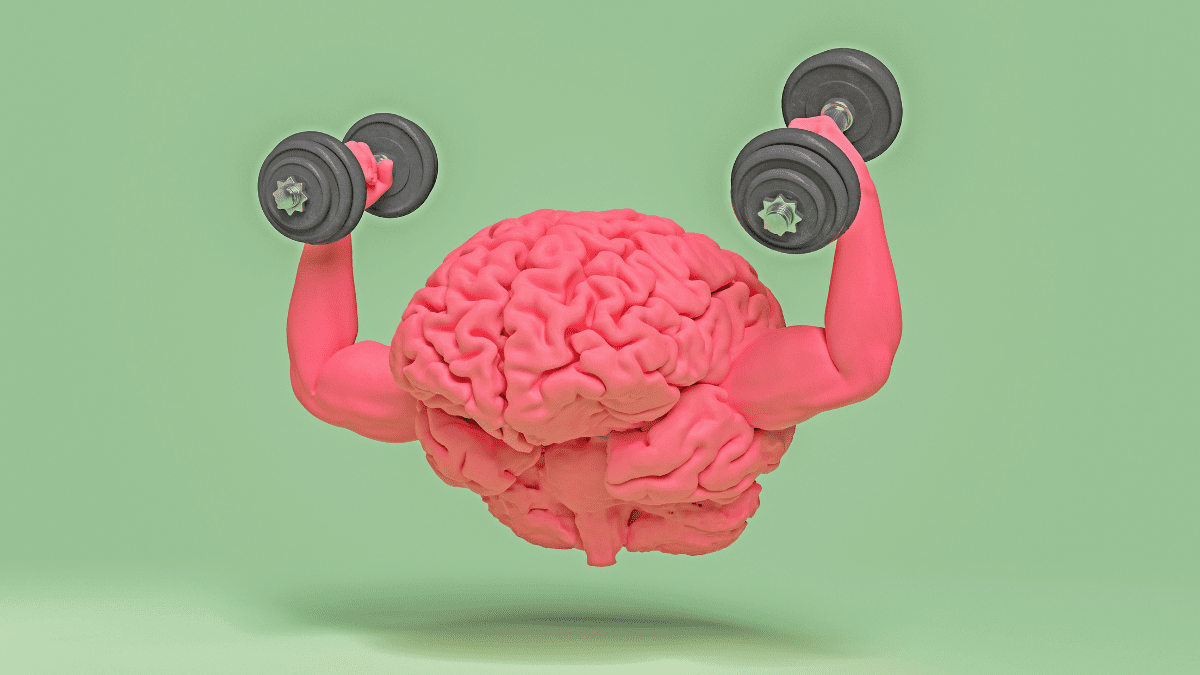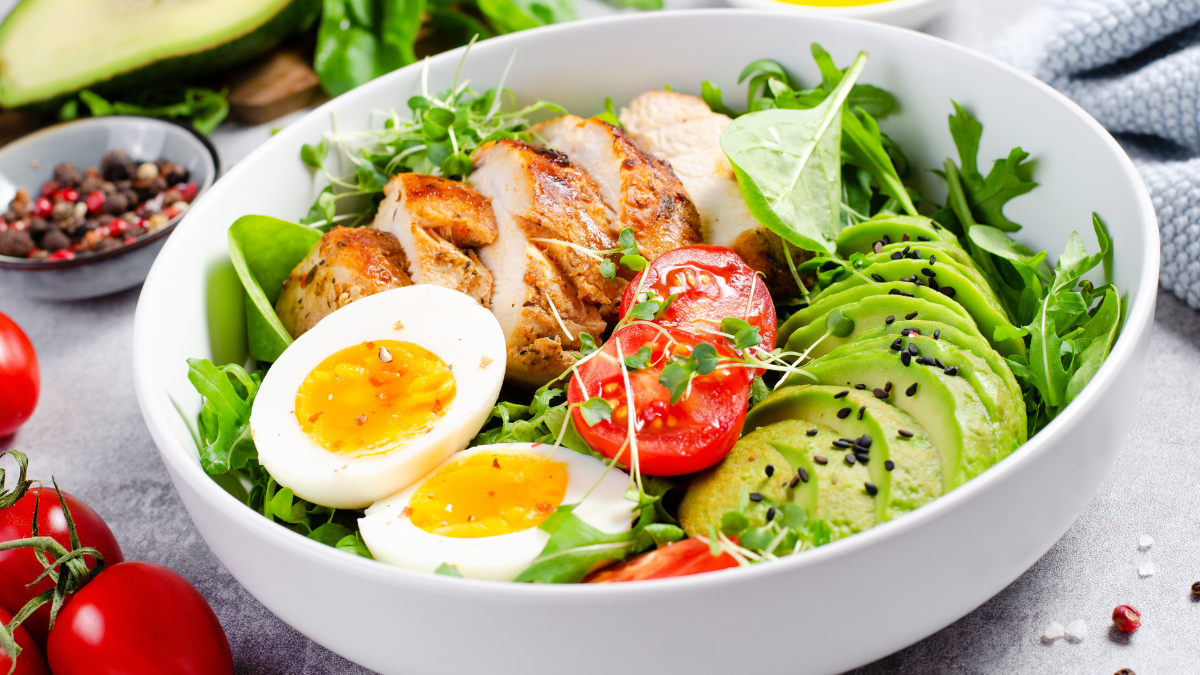ADHD Nutrition Diet: Easy Changes, Powerful Results For You
An ADHD Nutrition Diet can change your life—boosting focus, energy, and clarity. Discover powerful, natural changes that truly work and bring you back to balance.
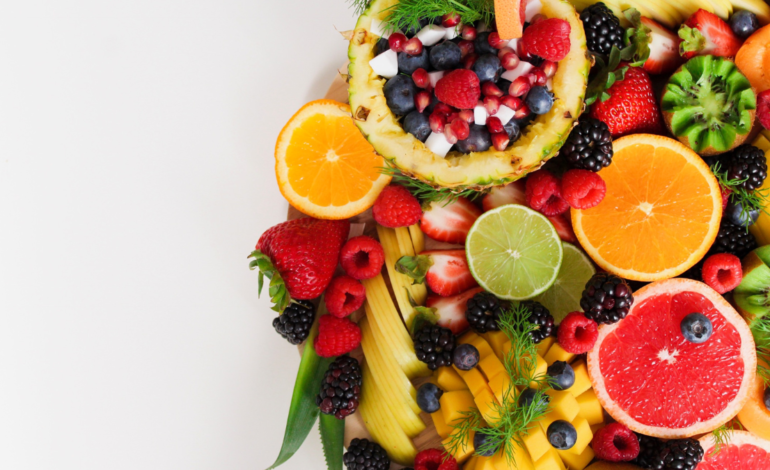
In This Article
- What Is an ADHD Nutrition Diet and Why Does It Work?
- How Can an ADHD Nutrition Diet Transform Your Daily Life?
- What Are the Best Foods to Include in an ADHD Nutrition Diet?
- Which Foods Should You Avoid in an ADHD Nutrition Diet?
- What Role Do Supplements Play in an ADHD Nutrition Diet?
- How to Build a Sustainable ADHD Nutrition Diet That Works for You
- Conclusion
- ADHD Nutrition Diet — FAQ
What Is an ADHD Nutrition Diet and Why Does It Work?
How Does Food Influence ADHD Symptoms?
The ADHD Nutrition Diet isn’t just another trend. It’s a grounded, science-supported way of eating that helps the brain work better – especially when it feels scattered, overwhelmed, or foggy. If you’ve ever wondered why some foods leave you sluggish while others seem to sharpen your focus, you’re not alone. Nutrition plays a much bigger role in attention, energy, and emotional balance than most people realize.
When your brain runs on the right fuel, everything changes. You can focus more easily, stay calm through challenges, and even sleep better. That’s why the ADHD Nutrition Diet isn’t about restriction – it’s about giving your nervous system what it truly needs.
Why Do Traditional Diets Miss The Neurodivergent Brain?
Most mainstream diet advice overlooks how the ADHD brain processes food, stimulation, and emotion. What works for the general population often fails for those who are neurodivergent. This is because blood sugar, inflammation, gut health, and nutrient absorption all impact how you think and feel.
In fact, studies now link ADHD and autism to chronic deficiencies in key nutrients – especially omega-3s, magnesium, iron, and zinc. On top of that, artificial additives and inflammatory foods can worsen symptoms. So shifting your nutrition isn’t about fixing yourself. It’s about working with your biology, not against it.
How Can ADHD Nutrition Diet Become Your Healing Tool?
Small, intentional changes can lead to huge shifts in clarity, mood, and motivation. Eating in a way that supports your brain helps reduce overstimulation, anxiety, and mental fatigue. When you give your body what it truly needs, you don’t just function better – you feel more like yourself again.
To go even deeper into whole-body support, check out our Gut Reset guide. Healing your gut is one of the most powerful ways to transform your brain from the inside out.
This article will guide you through what to eat, what to avoid, and how to make changes that actually stick. Because nourishing your brain should feel supportive – not stressful. Let’s get into it.
How Can an ADHD Nutrition Diet Transform Your Daily Life?
What Role Do Micronutrients Play in Managing ADHD Symptoms?
Micronutrients, vitamins and minerals are essential for brain function – crucial in managing ADHD symptoms. Deficiencies in iron, zinc, magnesium, and vitamin D have been linked to increased ADHD symptoms. Supplementing these nutrients may improve attention, impulse control, and hyperactivity. For example, a study found that children with ADHD had lower levels of zinc, and supplementation led to symptom improvement.
Key Micronutrients to Monitor:
- Iron: Vital for dopamine production, influencing attention and behavior.
- Zinc: Supports neurotransmitter function and melatonin metabolism, affecting mood and sleep.
- Magnesium: Involved in neurotransmission and may help reduce hyperactivity.
- Vitamin D: Low levels are associated with increased ADHD symptoms; supplementation may offer benefits.
Incorporating foods rich in these micronutrients – such as lean meats, nuts, seeds, leafy greens, and fortified dairy products – can support overall brain health and potentially alleviate ADHD symptoms.
How Do Omega-3 Fatty Acids Influence ADHD Nutrition Diet?
Omega-3 fatty acids, particularly EPA and DHA found in fish and algae oils, play a significant role in brain health. Studies suggest that individuals with ADHD may have lower levels of these fatty acids, and supplementation can lead to modest improvements in attention and hyperactivity.
Incorporating Omega-3s:
- Fatty Fish: Salmon, mackerel, and sardines are excellent sources.
- Algae Oil: A plant-based alternative providing DHA and EPA.
- Supplements: Fish oil or algae-based capsules can ensure adequate intake.
Regular consumption of omega-3s may enhance cognitive function and reduce ADHD-related behaviors.
Can Elimination Diets Benefit Individuals with ADHD?
Elimination diets involve removing specific foods or additives suspected of exacerbating ADHD symptoms. Some research indicates that certain individuals may experience improvements by identifying and avoiding these triggers.
Common Culprits:
- Artificial Food Colorings and Preservatives: Linked to increased hyperactivity in some children.
- Allergens: Gluten or dairy may affect behavior in sensitive individuals.
Implementing an Elimination Diet:
- Consult a Professional: Work with a healthcare provider to ensure nutritional adequacy.
- Remove Suspected Triggers: Eliminate one potential trigger at a time.
- Monitor Symptoms: Keep a detailed journal to track changes.
- Reintroduce Foods: Gradually reintroduce items to identify specific sensitivities.
While not universally effective, elimination diets can be a valuable tool for some individuals in managing ADHD symptoms.
How Does a Balanced Diet Impact ADHD?
Adopting a balanced diet rich in whole foods can positively influence ADHD symptoms. Diets high in processed foods, sugars, and unhealthy fats are associated with increased symptom severity, while nutrient-dense diets may offer protective benefits.
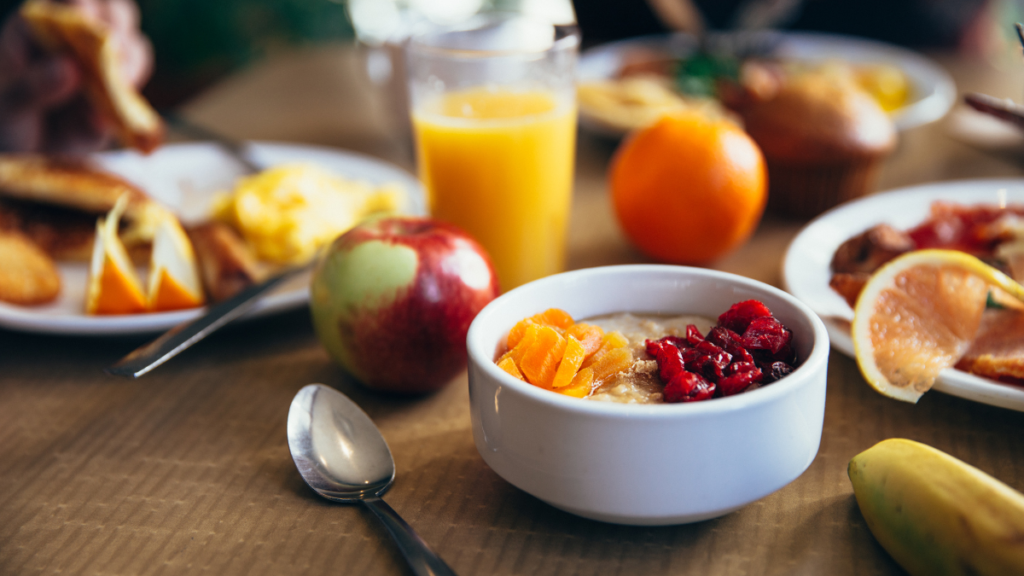
Components of a Balanced Diet:
- Fruits and Vegetables: Provide essential vitamins, minerals, and antioxidants.
- Whole Grains: Offer steady energy release, aiding concentration.
- Lean Proteins: Support neurotransmitter production.
- Healthy Fats: Found in avocados, nuts, and olive oil, crucial for brain health.
Emphasizing whole, unprocessed foods can lead to better overall health and potentially mitigate ADHD symptoms.
What Are Practical Tips for Implementing an ADHD Nutrition Diet?
Incorporating an ADHD diet and nutrition plan tailored to individual needs can significantly impact symptom management and overall well-being.
Transitioning to a nutrition plan supportive of ADHD management involves practical steps:
- Plan Meals Ahead: Reduces reliance on processed foods.
- Involve the Individual: Encourages adherence and personal investment.
- Educate on Nutrition: Understanding the impact of food choices empowers better decisions.
- Seek Professional Guidance: Dietitians or nutritionists can provide personalized advice.
Implementing these strategies can make dietary changes more manageable and effective in supporting ADHD management.
What Are the Best Foods to Include in an ADHD Nutrition Diet?
Which Food Groups Support an ADHD-Friendly Brain?
Not all calories nourish the same. When it comes to ADHD nutrition diet support, it’s the quality that matters. Certain foods actively stabilize blood sugar, boost neurotransmitter function, and calm the nervous system — giving the ADHD brain a chance to thrive.
Here’s what to focus on:
- Lean proteins – eggs, turkey, chicken, tofu, and legumes support dopamine production and sustained energy.
- Complex carbs – oats, brown rice, sweet potatoes, and quinoa slow sugar absorption and stabilize mood.
- Omega-3-rich fats – fatty fish, chia seeds, and flaxseeds reduce inflammation and enhance focus.
- Micronutrient-dense vegetables – especially leafy greens, bell peppers, and carrots fuel the brain with antioxidants and minerals.
- Berries and citrus fruits – rich in vitamin C and polyphenols that protect the nervous system.
A 2022 review on dietary patterns in ADHD confirms that balanced intake of these whole foods correlates with reduced symptom severity and better behavior outcomes.
How Do These Foods Work in the ADHD Brain?
Your brain runs on chemistry — and food builds that chemistry. An ADHD nutrition diet rich in whole foods supplies steady glucose for energy and nutrients for neurotransmitter synthesis. This leads to:
- Improved impulse control
- More consistent focus
- Stabilized emotional responses
Protein, for instance, helps regulate dopamine — a key neurotransmitter that’s often dysregulated in ADHD. Complex carbs prevent mood dips by maintaining blood sugar levels. Omega-3s, meanwhile, support brain cell communication.
Small upgrades in your meals can result in meaningful shifts in how you feel.
Want to support your focus and energy naturally? Try adding Bacopa monnieri to your ADHD nutrition plan for a simple yet powerful upgrade.
Can Meal Timing Make a Difference?
Yes. When and how often you eat influences ADHD symptoms too. Skipping meals or relying on sugar spikes leads to emotional volatility and brain fog.
Consider:
- Eating within an hour of waking to stabilize cortisol and blood sugar.
- Spacing meals evenly every 3–4 hours.
- Pairing carbs with fat or protein to slow digestion and fuel focus.
These gentle adjustments help keep the ADHD brain fueled, steady, and less reactive throughout the day.
What If You’re Sensitive to Certain Foods?
Some individuals with ADHD also experience food sensitivities. If you notice bloating, brain fog, or mood swings after eating certain ingredients, try journaling your meals and symptoms.
Common culprits may include:
- Dairy
- Gluten
- Artificial additives
- Corn syrup and processed oils
An elimination approach — guided by a practitioner — can help you identify personal triggers without overly restricting your diet.
Which Foods Should You Avoid in an ADHD Nutrition Diet?
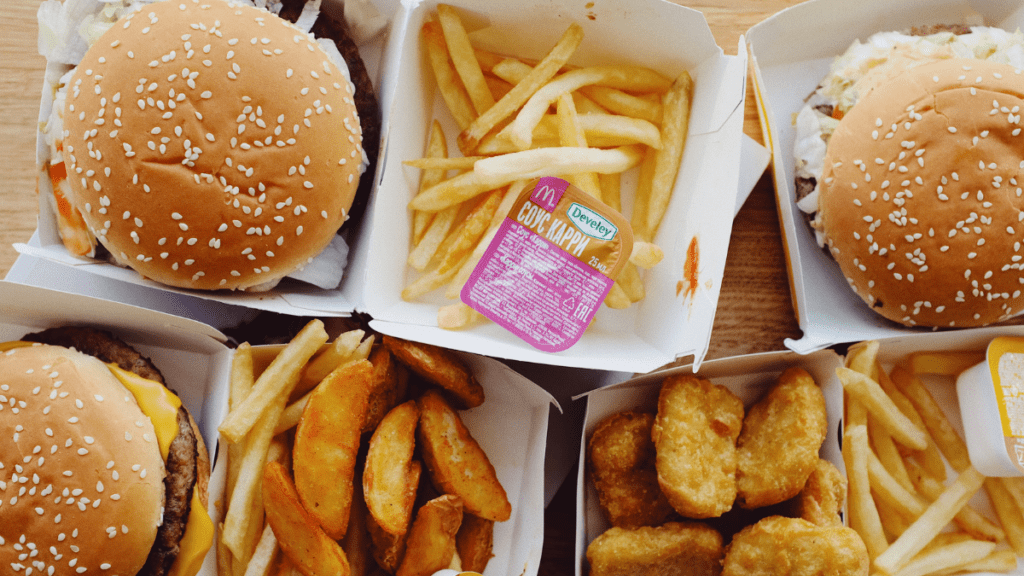
Can Certain Foods Make ADHD Symptoms Worse?
Absolutely. The ADHD brain is more sensitive to stimulation — and some foods overstimulate, rather than nourish. These can trigger blood sugar crashes, inflammation, or emotional reactivity. Identifying and limiting these culprits is a crucial step in refining your ADHD nutrition diet.
The most common offenders include:
- Refined sugar – causes energy spikes followed by crashes that disrupt focus and mood.
- Artificial colorings and preservatives – linked to increased hyperactivity in several studies.
- Trans fats and processed oils – interfere with brain signaling and increase inflammation.
- White flour products – spike blood glucose without offering lasting fuel.
- Excess caffeine – may increase anxiety or impulsive behaviors, especially in children.
According to this 2022 clinical review, diets high in processed foods, sugars, and additives are associated with more severe ADHD symptoms across all age groups.
Why Are Additives and Colorings So Problematic in ADHD Nutrition Diet?
Artificial additives don’t just alter flavor or shelf life — they can alter brain chemistry too. Food colorings like Red 40 and Yellow 5 have been shown to disrupt attention in sensitive individuals. Preservatives such as sodium benzoate may further irritate the nervous system.
Even small amounts consumed regularly can compound over time.
Watch out for:
- Packaged snacks
- Candy and soft drinks
- Flavored cereals or yogurts
- Juice boxes and sauces
If in doubt, opt for simpler ingredient lists and make meals at home when possible.
Are “Healthy-Looking” Foods Also to Blame?
Yes. Some foods appear wholesome but contain hidden triggers. Yogurt, granola bars, or “whole grain” breads may be packed with sugar or additives.
That’s why reading labels is powerful. Look for:
- Unpronounceable additives
- Hidden sugars (like maltodextrin or cane syrup)
- “Natural flavors” that aren’t so natural
Choosing truly whole foods helps you avoid these sneaky setbacks.
How Do You Know Which Foods Affect You?
Every body is different. What flares one person’s symptoms may not affect another. The best way to find clarity is to track your meals and how you feel afterward.
Use a food and mood journal to explore patterns in:
- Focus
- Energy
- Emotional reactions
- Sleep quality
This gentle self-awareness helps you fine-tune your ADHD nutrition diet based on your body’s unique responses.
What Role Do Supplements Play in an ADHD Nutrition Diet?
Can Supplements Fill Nutritional Gaps for ADHD Nutrition Diet?
Even with a whole-food ADHD nutrition diet, some nutrients may still fall short. Soil depletion, busy schedules, and gut imbalances can affect how well we absorb what we eat. That’s where supplementation can offer targeted support.
However, not all supplements are created equal — or necessary. The goal isn’t to replace real food but to bridge gaps where diet alone may not be enough.
Supplements shown to support ADHD include:
- Omega-3 fatty acids (EPA + DHA)
- Magnesium and zinc
- Iron and vitamin D
- L-carnitine
- B-complex vitamins (especially B6, B9, B12)
Each of these nutrients plays a role in focus, emotional regulation, sleep, and executive functioning. A 2021 systematic review in Nutrients found that supplementation with omega-3s and micronutrients reduced ADHD symptoms, especially in children and adolescents with deficiencies.
Which ADHD Symptoms May Improve with Supplements?
When used mindfully, the right supplements may support:
- Improved attention span
- Decreased impulsivity
- More stable moods
- Less anxiety or hyperactivity
- Better sleep quality
Yet results vary. Some people notice effects within weeks, while others need months of consistent use. That’s why tracking and professional guidance are key.
How Can You Choose Quality Supplements?
Your body deserves the best — not fillers or synthetic additives. When choosing supplements, look for:
- Third-party tested for purity and potency
- Bioavailable forms (e.g. magnesium glycinate, methylated B vitamins)
- Minimal additives or allergens
- Clinical backing or practitioner recommendations
Avoid megadosing without supervision. More isn’t always better — especially for sensitive nervous systems.
Should You Test Before Taking Supplements?
In many cases, yes. Lab testing can confirm deficiencies and help tailor your ADHD nutrition diet more precisely. A functional medicine provider or integrative doctor can run panels for iron, vitamin D, omega-3s, or B-vitamin levels.
This way, you’re not guessing. You’re nourishing based on your actual needs.
How to Build a Sustainable ADHD Nutrition Diet That Works for You
Why Do ADHD Brains Struggle With Food Consistency?
It’s not just about knowing what to eat. Many with ADHD face executive dysfunction that makes planning, shopping, and preparing meals feel overwhelming. You might forget to eat, crave instant fixes, or rely on the same few comfort foods.
This isn’t laziness — it’s a neurodivergent need for structure that feels intuitive, not forced.
That’s why your ADHD nutrition diet must work with your brain, not against it.
What Habits Make ADHD Nutrition Easier to Maintain?
Instead of drastic changes, build your foundation with gentle routines and sensory-friendly foods. Try starting with:
- Batch-cooking proteins you can mix and match throughout the week
- Stocking go-to snacks like hard-boiled eggs, trail mix, or hummus
- Keeping a simple food journal (just a few lines per day)
- Using timers or visual cues to remember to eat
You don’t need perfection. You need rhythm.
Start by building one meal or one prep ritual that makes you feel more nourished. Then grow from there.
Struggling with your mornings? This ADHD-friendly morning routine can set the tone for your day — with ease.
How Can You Make ADHD-Friendly Meals More Enjoyable?
Food isn’t only fuel. It’s emotional, sensory, and deeply personal. And for many neurodivergent folks, texture, smell, or taste sensitivity plays a big role.
To make your ADHD nutrition diet more appealing:
- Use vibrant, colorful plates
- Mix soft and crunchy textures mindfully
- Prep in a calming environment — music, candle, clean counter
- Pair meals with a body-doubling buddy for focus and ease
The more you enjoy the process, the more sustainable it becomes.
What If You Struggle to Stick With It?
You’re not alone. ADHD brains crave novelty and stimulation, so repetition can feel dull. But variety doesn’t have to be overwhelming.
Try:
- Rotating 3–5 base meals with small variations
- Swapping spices or sides to keep meals exciting
- Building in small “wins” — like checking off a nutrition goal on a chart
And most importantly, give yourself grace. This is a long game. Your ADHD nutrition diet is meant to evolve with you, not stress you out.
Conclusion
An ADHD nutrition diet isn’t a rigid set of rules – it’s a framework for care. When you feed your brain with intention, you create space for clarity, steadiness, and joy.
Throughout this guide, we’ve explored how nutrition directly shapes:
- Focus and attention
- Mood and emotional regulation
- Impulsivity and executive function
By leaning into whole foods, regulating blood sugar, and identifying personal triggers, you’re not just managing ADHD – you’re supporting the nervous system with compassion.
You don’t have to change everything overnight. Start small:
- Add one extra protein-rich breakfast this week
- Swap one processed snack for something colorful and nourishing
- Or pause long enough to ask: what does my brain truly need right now?
Supplementation, food journaling, and gentle planning tools can all play a supportive role. But above all, consistency beats intensity. That’s the real key.
If this resonated with you, explore our guide on Natural Help for ADHD and Autism: Regain Control Now. It dives deeper into holistic, nervous-system-based support strategies that empower neurodivergent minds.
Your ADHD isn’t something to fix – it’s something to understand and support. Through food, structure, and daily care, you can create a life that honors how your mind works best.
You are not behind. You’re building a path that was never designed with you in mind – and that’s brave, beautiful work.
So thank you for being here! Let’s keep choosing nourishment – one bite, one breath, one moment at a time.
ADHD Nutrition Diet — FAQ
What is the best ADHD nutrition diet for adults?
The best ADHD nutrition diet for adults includes high-protein meals, complex carbohydrates, and healthy fats. Focus on foods like eggs, leafy greens, salmon, nuts, and legumes. These support dopamine production and stabilize blood sugar. Try to reduce processed foods and sugars, which can trigger mood swings and impulsivity. For many, consistent meal timing also helps with energy and focus.
Can diet alone improve ADHD symptoms naturally?
Yes – for many people, especially when combined with sleep, exercise, and stress management. While diet isn’t a cure, it can reduce symptom severity. Key nutrients like omega-3s, magnesium, and B vitamins play a major role in brain function. A whole-food ADHD nutrition diet supports emotional regulation, reduces brain fog, and improves attention span over time.
Are there specific foods to avoid in an ADHD nutrition diet?
Definitely. Avoid artificial dyes, preservatives, refined sugar, and ultra-processed snacks. These can overstimulate the nervous system and make symptoms worse. Common triggers include sodas, candy, packaged cereals, and fast food. Some people with ADHD also have sensitivities to dairy or gluten. Try keeping a food journal to identify patterns and personalize your diet.
Looking for holistic tools beyond food? Here’s a full guide to natural help for ADHD and autism that blends science and soul.
Created by Lili Vu, holistic health & nutrition coach in training. Deeply passionate about mind-body healing, nourishment, and intentional living — practices I’ve lived, tested, and continue to grow through. Embracing my ADHD and supporting my partner through a brain attack transformed how I understand the nervous system, resilience, and healing. I explore holistic well-being through yoga, plant-based nutrition, gut and hormone health, trauma recovery, and mindful habit change — all rooted in my personal healing journey. 🌿



